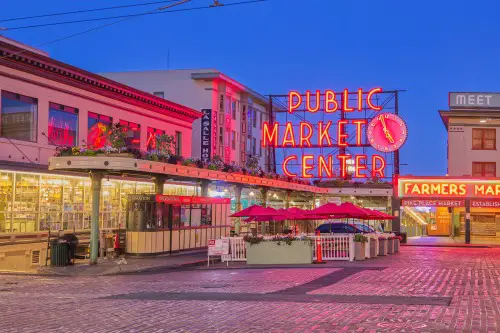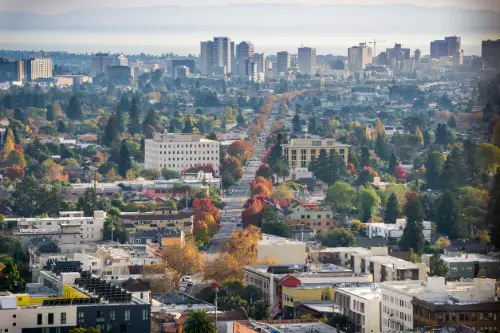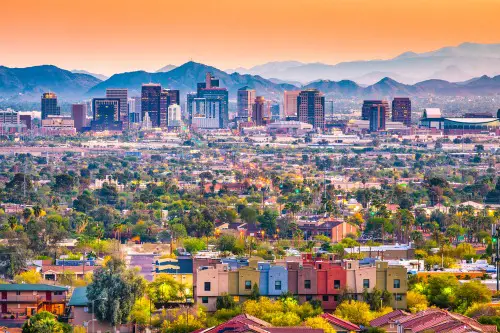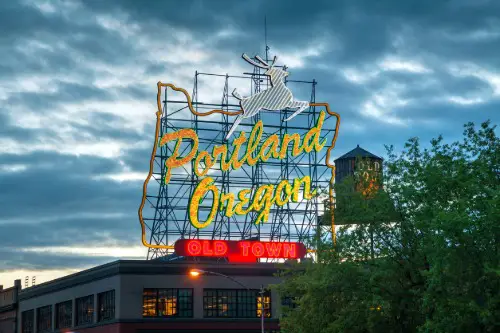1. Las Vegas, Nevada

Las Vegas has been facing a growing homelessness crisis, with approximately 6,566 individuals experiencing homelessness every night, according to the Nevada Homeless Alliance. The city’s reliance on tourism creates a unique economic environment where many low-wage workers struggle to afford housing. A lack of affordable rental units, coupled with high eviction rates, has pushed more people onto the streets. Additionally, extreme summer temperatures make unsheltered homelessness particularly dangerous.
Efforts to address the crisis include expanding emergency shelters and increasing affordable housing options. However, challenges persist, especially with limited funding for mental health and addiction services. Some policies, such as anti-camping laws, have sparked controversy for criminalizing homelessness rather than addressing its root causes. Sustainable solutions will require a mix of long-term housing programs, employment support, and mental health resources.
2. Denver, Colorado

Denver has experienced a significant rise in homelessness, according to the Denver Rescue Mission. Factors contributing to this increase include a booming population, rising housing costs, and a shortage of affordable housing options. The city’s growing economy has led to increased living expenses, making it difficult for low-income residents to maintain stable housing. Additionally, mental health and substance abuse issues are prevalent among the homeless population.
The city’s response includes expanding shelter services and investing in affordable housing initiatives. However, the rapid growth of the homeless population presents ongoing challenges. Community concerns about public safety and sanitation add pressure to find effective solutions. Collaborative efforts focusing on prevention, intervention, and long-term housing are essential to address the crisis.
3. New York City, New York

New York City has long faced a substantial homelessness issue, which has intensified recently. In 2024, the city experienced a 53% surge in homelessness, according to the New York Post. This increase is largely attributed to an influx of migrants seeking shelter, coupled with a shortage of affordable housing and rising rent prices. The city’s legal obligation to provide shelter to those in need further strains its resources.
The city’s shelter system is overwhelmed, accommodating both long-term homeless residents and new arrivals. Efforts to address the crisis include expanding shelter capacity and exploring permanent housing solutions. However, the sheer scale of the problem presents significant challenges. The situation underscores the need for comprehensive strategies that address both immediate shelter needs and long-term housing affordability.
4. Los Angeles, California

Los Angeles is renowned for its homelessness crisis, particularly in areas like Skid Row, according to the Los Angeles Times. Contributing factors include a severe housing shortage, escalating housing costs, and a high prevalence of mental health and substance abuse issues among the homeless population. Efforts like the “Inside Safe” program have been implemented to move individuals from encampments into temporary housing.
Despite these initiatives, the challenge remains daunting. The city’s vast geography and diverse population complicate service delivery. Additionally, community opposition to new shelters and housing developments often hinders progress. Addressing homelessness in Los Angeles requires a multifaceted approach, balancing immediate interventions with long-term solutions.
5. Seattle, Washington

Seattle has seen a notable increase in homelessness, according to the Seattle Times. A significant factor is the city’s rapidly rising housing costs, which have outpaced wage growth for many residents. The tech boom has contributed to economic disparities, making it challenging for low-income individuals to afford housing. Additionally, the region’s opioid crisis has exacerbated the situation, leading to higher rates of substance abuse among the homeless population.
The city’s response includes expanding shelter capacity and investing in affordable housing projects. However, the demand continues to outstrip available resources. Public debates often arise over the best approaches to address encampments and provide services. Collaborative efforts between government agencies, nonprofits, and the community are essential to make meaningful progress.
6. San Diego, California

San Diego faces a growing homelessness issue, with a reported 10,264 individuals experiencing homelessness in 2023. The city’s desirable climate attracts individuals seeking milder conditions, contributing to the influx. A lack of affordable housing and limited shelter capacity further exacerbate the problem. Efforts to address the crisis include initiatives to increase shelter beds and provide supportive services.
Despite these efforts, challenges persist. The city’s proximity to the border presents unique dynamics, including the arrival of migrants in need of assistance. Balancing enforcement of public space regulations with compassionate outreach remains a delicate task. Comprehensive strategies that address both housing affordability and supportive services are crucial for long-term solutions.
7. San Jose, California

San Jose, located in the heart of Silicon Valley, reported approximately 9,903 homeless individuals in 2023. The area’s high cost of living, driven by the tech industry’s presence, has made housing unaffordable for many residents. A shortage of affordable housing units and limited shelter capacity contribute to the crisis. Efforts to address homelessness include developing supportive housing and providing services aimed at self-sufficiency.
Despite these initiatives, the challenge remains significant. The disparity between high-income tech workers and low-income residents creates economic tensions. Community resistance to new housing developments often slows progress. Addressing homelessness in San Jose requires innovative solutions that bridge economic divides and expand housing opportunities.
8. Oakland, California

Oakland faces a substantial homelessness challenge, with approximately 9,759 individuals reported in 2023. The city’s rising housing costs and gentrification have displaced many long-term residents. A lack of affordable housing and limited access to mental health services exacerbate the situation. Efforts to address the crisis include increasing shelter capacity and implementing programs to prevent displacement.
The city’s diverse population presents unique challenges in service delivery. Cultural and linguistic barriers can hinder access to assistance. Additionally, public debates over encampment policies highlight the need for balanced approaches. Collaborative strategies that involve community input and prioritize equity are vital for effective solutions.
9. Phoenix, Arizona

Phoenix has seen a notable increase in homelessness, with approximately 9,642 individuals reported in 2023. Factors contributing to this rise include rapid population growth, rising housing costs, and a shortage of affordable housing options. The city’s extreme temperatures pose additional challenges for individuals experiencing homelessness. Efforts to address the crisis include expanding shelter services and developing affordable housing projects.
Despite these efforts, the demand for services continues to grow. The city’s sprawling geography complicates outreach and service delivery. Public concerns about safety and sanitation in public spaces add pressure to find effective solutions. Comprehensive approaches that address both immediate needs and long-term housing stability are essential.
10. Sacramento, California

Sacramento reported approximately 9,281 individuals experiencing homelessness in 2023, reflecting a significant increase in recent years. Rising housing costs and a shortage of affordable units have contributed to the crisis. The city’s growing population has outpaced housing development, leading to increased competition for limited resources. Efforts to address homelessness include expanding shelter capacity and investing in supportive housing.
The city’s role as the state capital brings additional attention to its homelessness challenges. Public debates often focus on the balance between enforcement and compassionate outreach. Collaborative efforts between state and local agencies are crucial to implement effective solutions. Addressing systemic issues such as housing affordability and access to services is key to long-term progress.
11. San Francisco, California

San Francisco has long struggled with homelessness, reporting approximately 8,035 individuals in 2019, with numbers remaining high in subsequent years. The city’s high cost of living and limited affordable housing options are significant contributors. Mental health and substance abuse issues are also prevalent among the homeless population. Efforts to address the crisis include substantial investments in housing and services.
Despite significant spending, challenges persist. The city’s dense urban environment complicates service delivery and outreach efforts. Public debates often center on the visibility of homelessness in prominent areas. Innovative approaches that address both housing and supportive services are necessary to make meaningful progress.
12. Portland, Oregon

Portland has seen a sharp rise in homelessness, with an estimated 6,297 individuals experiencing homelessness in 2023. The city’s housing affordability crisis, driven by rapid population growth and rising rents, has made it difficult for many residents to keep a roof over their heads. Encampments have become more visible across the city, sparking debates on how best to handle the crisis. In addition, the opioid epidemic has worsened conditions for many people living on the streets.
Local leaders have attempted to combat homelessness by increasing shelter capacity and investing in supportive housing. However, tensions exist between those advocating for more housing solutions and others pushing for stricter encampment regulations. The city’s progressive policies on homelessness have drawn both praise and criticism, highlighting the complexity of the issue. Addressing homelessness in Portland will require a balanced approach that prioritizes housing, healthcare, and employment opportunities.


